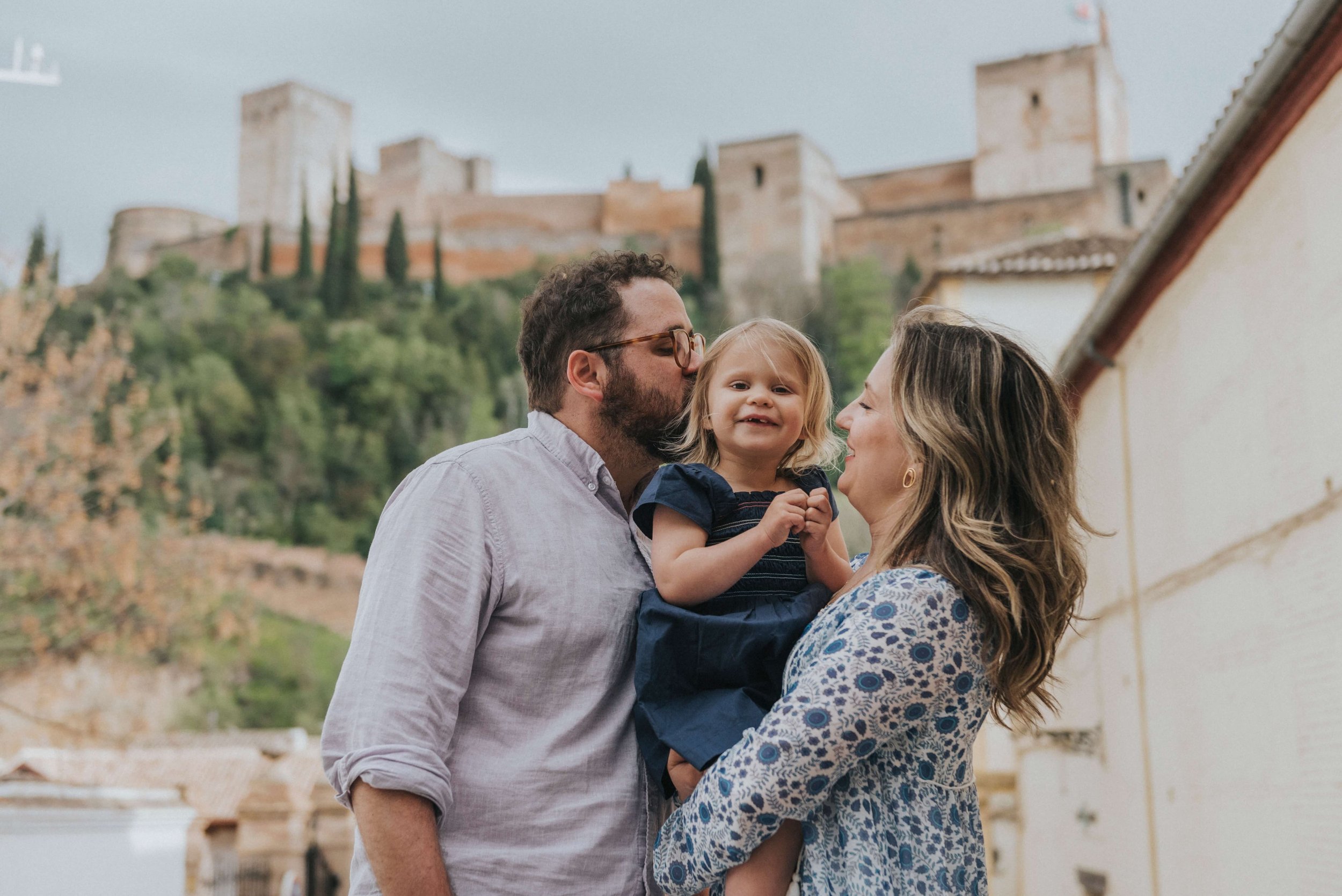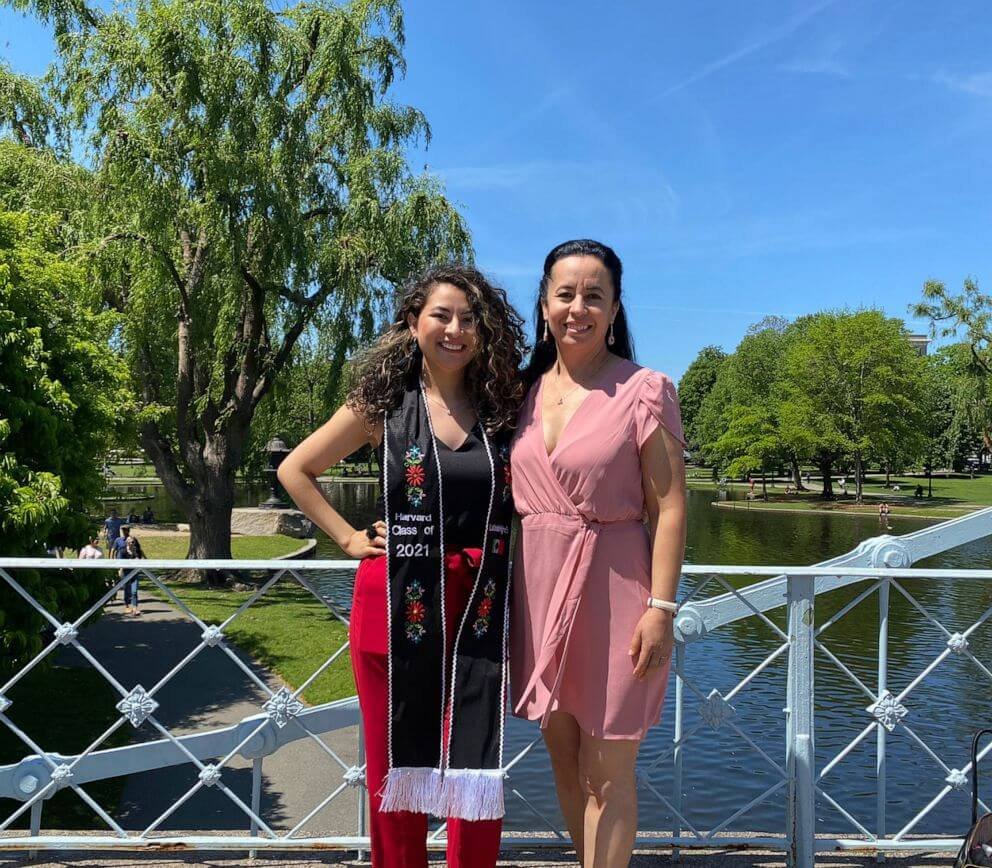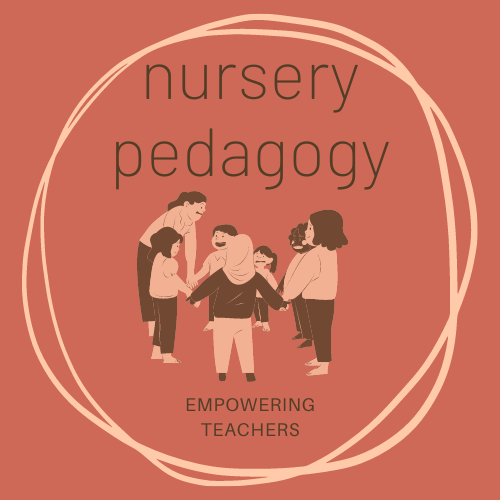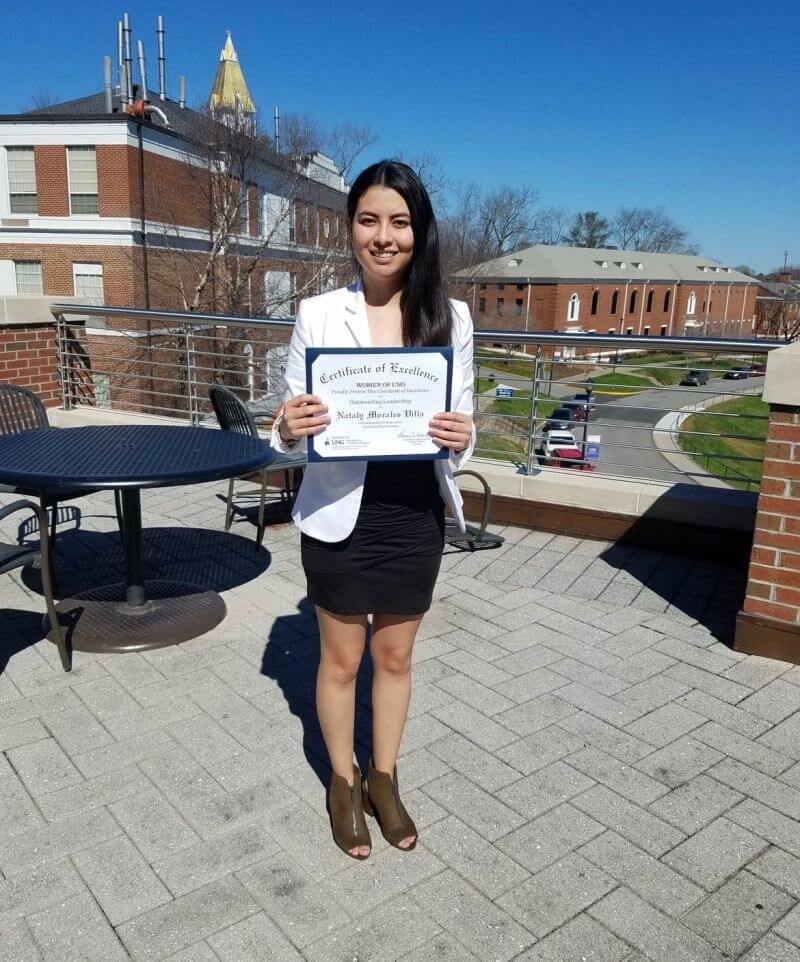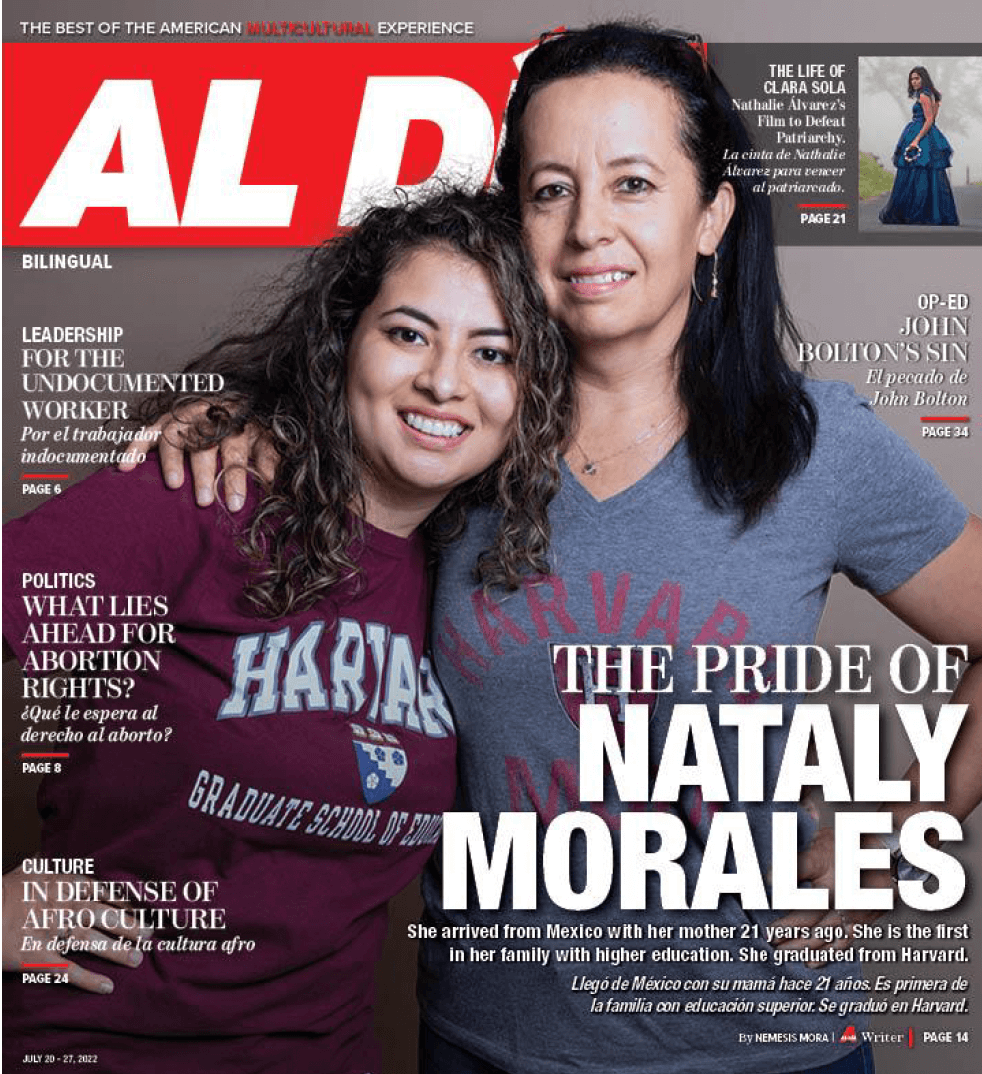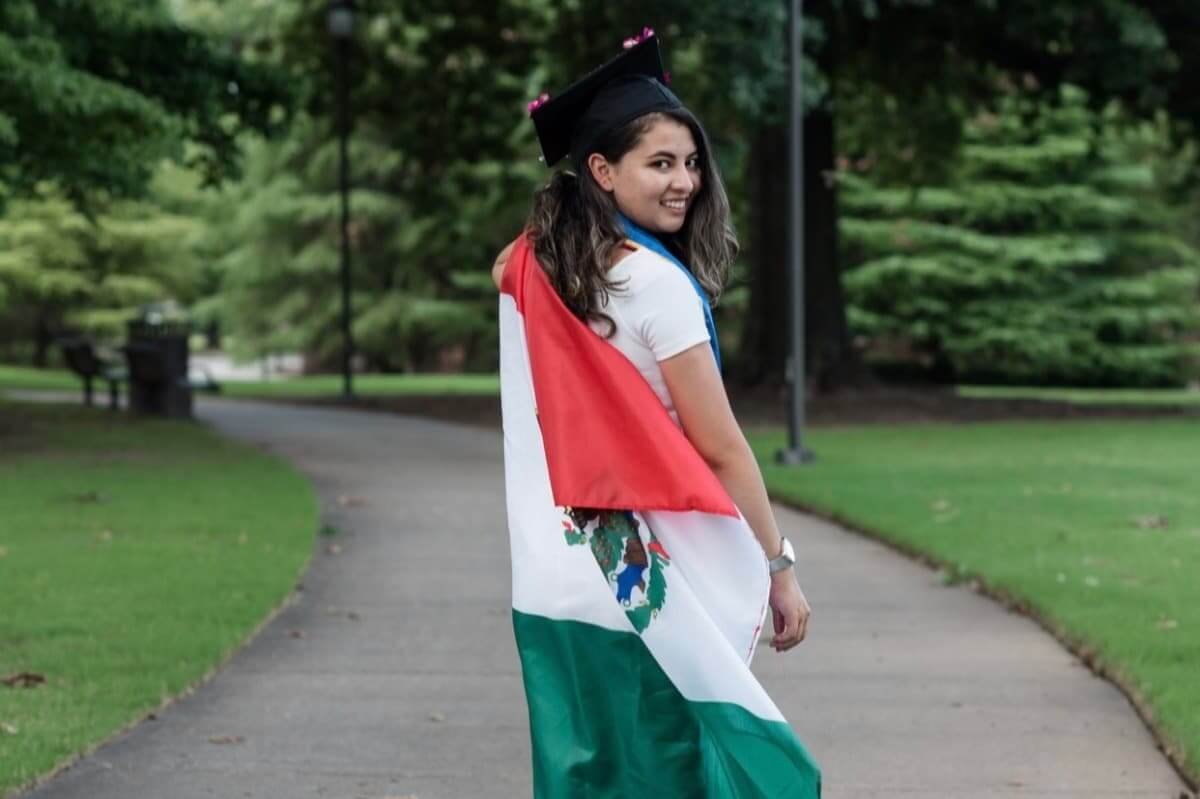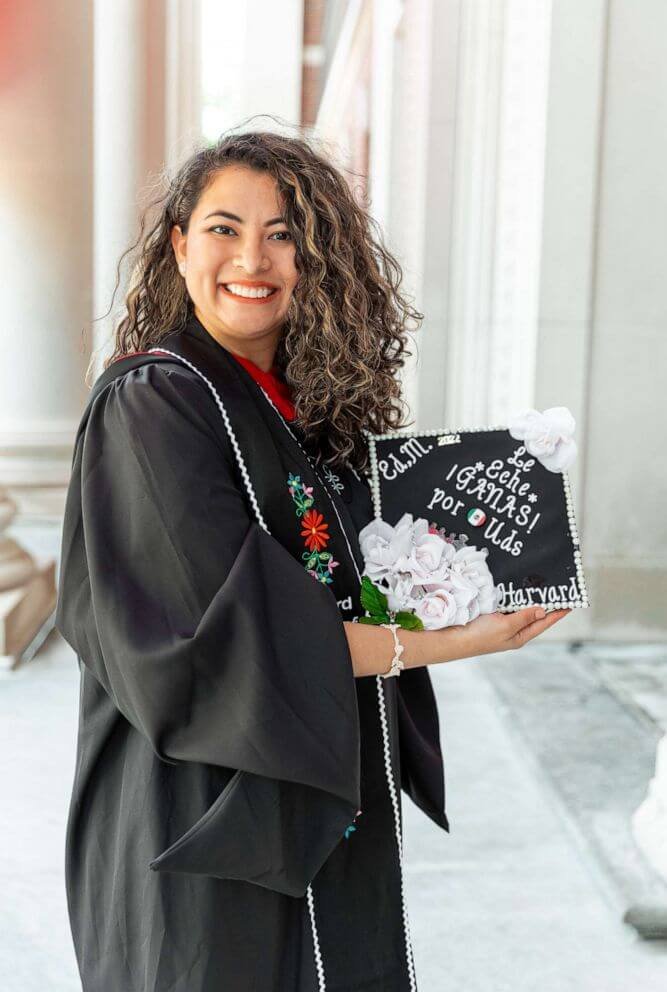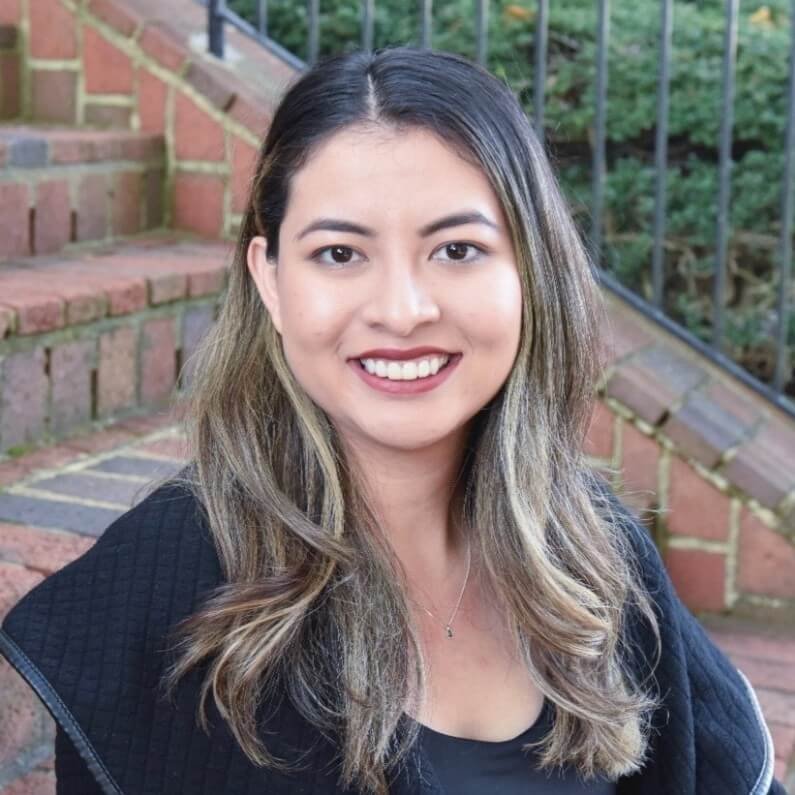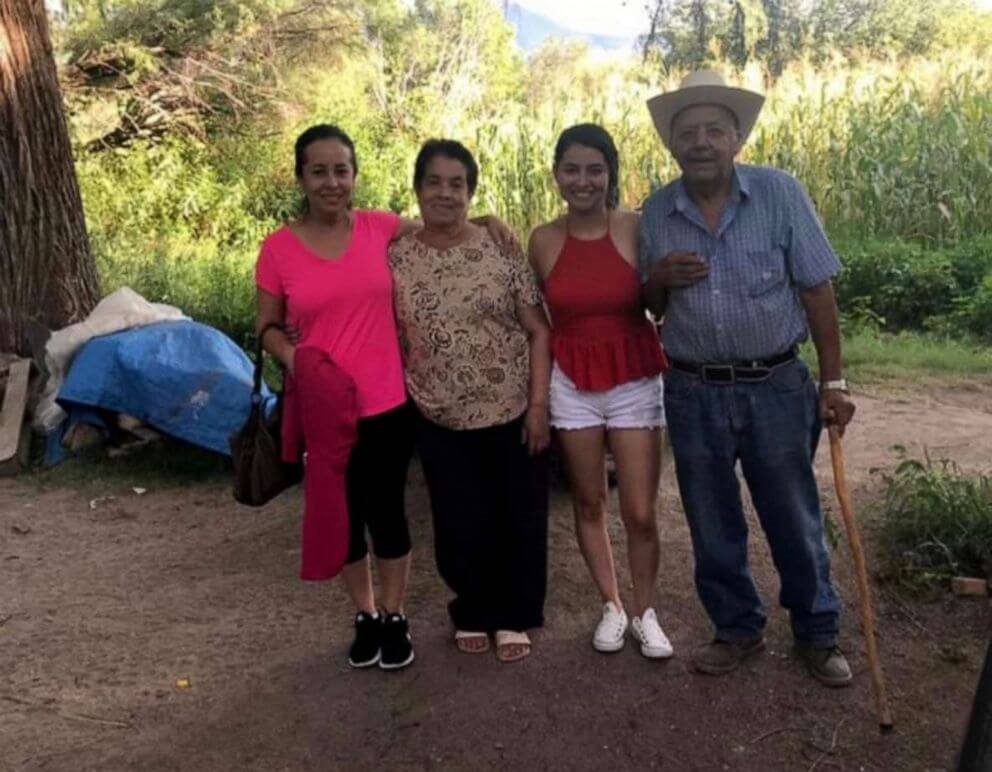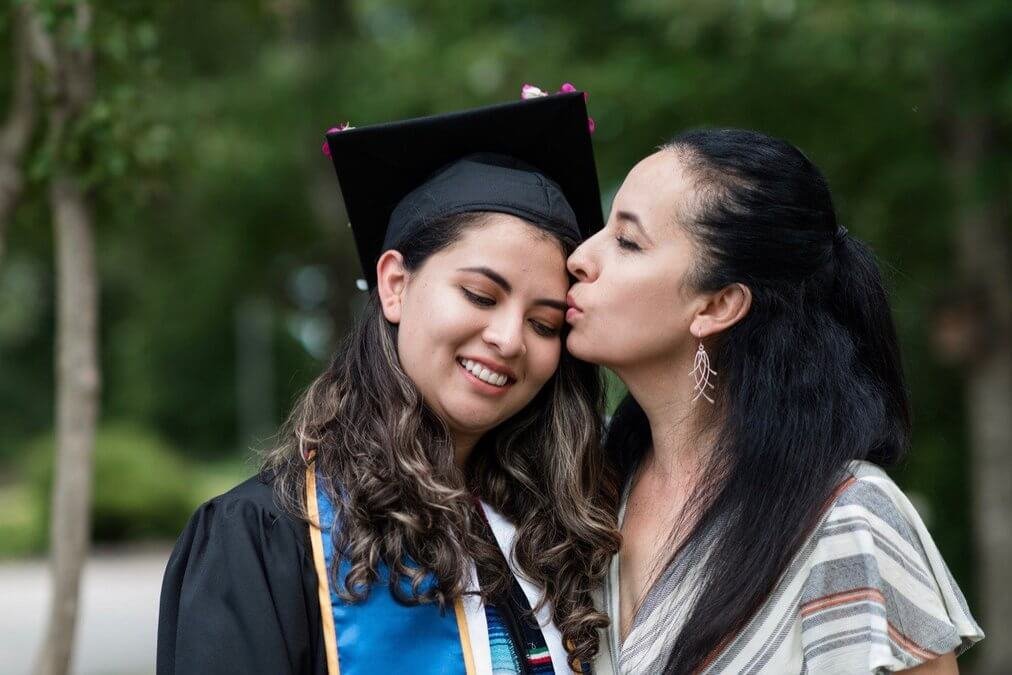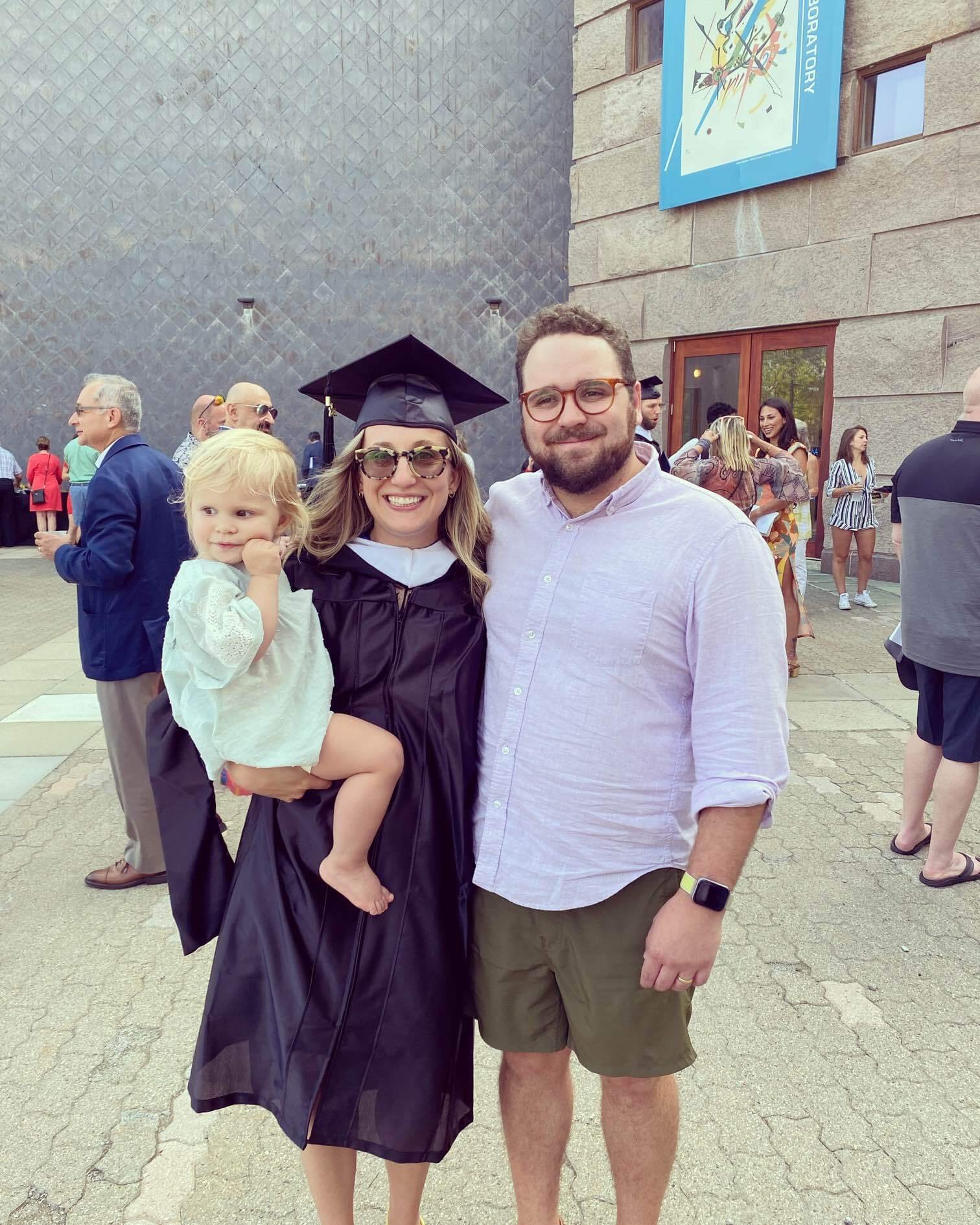Monolinguals Raising Bilingual Children: Three Incredible Women Share Their Stories
Meet Catherine:
The Non-Native Mother Mastering the Art of Raising Bilingual Kids
Meet Helena:
Nursery Teacher Transforming Monolingual Toddlers into Polyglots
Meet Nataly:
First-Generation Mexican Immigrant & Harvard Graduate, Shaping Bilingualism
In an increasingly interconnected and globalized world, the ability to speak more than one language isn’t just a nifty skill—it's an indispensable asset.
Bilingualism opens doors to personal and cognitive benefits, economic opportunities, and human connection via increased cultural understanding. Yet, as clear as these advantages may be, the journey to bilingualism can present real challenges—especially for families where parents are monolingual or non-native speakers of the desired second language.
If you find yourself wondering, "Is the effort to foster bilingualism in my child truly worth it?"
My answer, from personal experience and passion, is a resounding yes! The benefits and sheer joy along the journey far outweigh any hurdles you might encounter. I would choose this path over and over again.
As someone who grew up monolingual in Nashville and is now raising a trilingual child in Belgium, I'm intimately familiar with the multifaceted challenges. They aren't just academic; they touch on emotional, social, and cultural aspects of our lives. Families like mine confront linguistic barriers, limited resources, and sometimes even societal biases. Balancing multiple languages at home, managing non-native accents, and embracing a bicultural identity can seem like a tall order.
Yet, in this post, I'm thrilled to shine a spotlight on the lived experiences of three remarkable women, Helena, Catherine, and Nataly. As our guest contributors, they bring their stories filled with trials, triumphs, and actionable insights. Alongside their narratives, you'll discover a blend of scientific research and practical wisdom to guide and empower your family's bilingual journey.
So, dive into their narratives, and let them inspire you. Know that regardless of your starting point, whether you're monolingual or a non-native speaker, you have the capability and resources to endow your child with bilingualism. This gift not only paves the way for lifelong benefits and opportunities but also ensures your child's prominent place in our ever-evolving global landscape.
Part 1: A Family's Journey. Real-World Lessons from Catherine, a Non-Native Speaker Raising Bilingual Kids
The Beautiful Complexity of Raising Bilingual Children
One of the most rewarding decisions I've made as a mother was to immerse my child in a multilingual environment, even though I'm not a native speaker. This choice, driven by an unwavering belief in the opportunities a second language provides, has been a journey of learning, laughter, and the inevitable challenges that come with any meaningful pursuit.
While I often lean on expert resources for guidance, it's the personal narratives that provide the much-needed inspiration, especially during moments of doubt. These stories serve as poignant reminders that challenges are part of any significant journey.
In this edition, Catherine Kretsch shares her experience in introducing a second language to her children. A monolingual herself who discovered the allure of another language later in life, Catherine was committed to gifting bilingualism to her child. Remarkably, she embarked on this adventure with her husband—a supportive partner who began as a complete non-speaker.
Through her candid lessons and insights, Catherine shines a light on the realities, the setbacks, but most importantly, the moments that make it all worthwhile. I hope you find as much inspiration in her story as I have.
5 Lessons Learned From Deciding to Raise Bilingual Children As A Non-Native Speaker:
by Catherine Kretsch
During my time at Middlebury Language Schools, studying for my Master's in Spanish with a concentration in Linguistics, I sat in my Advanced Grammar course listening to my professor try to pronounce many very American names starting with C or K, including my own. It was at that moment that I realized if I was going to teach my future children Spanish, I had to give them names that also worked in Spanish.
Two years later, I was attending my third summer out of four at Middlebury Language Schools, pregnant with my first child, Paloma. I carried her through a world of language learning in my immersive master's program. Paloma had already traveled to Spain twice while in utero. She was going to be bilingual!
Now, four years and another baby later, our magical journey of raising bilingual children as two non-native speakers from a small New England town has had its ups and downs. Overall, I remember that anything is better than nothing.
I am a high school Spanish teacher who grew up in a very Irish small town in northern Massachusetts. My husband and I met in high school. I am fortunate that his love of Spain and commitment to raising bilingual children is just as strong as mine, even though he doesn’t speak the language like I do. I consider myself bilingual and very advanced in Spanish, while my husband is a novice, slowly learning along with our children and through our travels. We are two non-native speakers: one bilingual and the other learning while enjoying the ride.
After ten years of teaching Spanish as a foreign language in high school and four years of raising bilingual children, Paloma and Lucian (also known as Luie), these are the 5 lessons I have learned:
1. If it's important to you, it can be important to them too—just don’t let the pressure set in.
In the last year or so the use of Spanish was low in our house, and it was making me sad. Slowly, now that we are working on communication with little Luie we are refocusing on Spanish and Paloma is much more aware of when we are using one language or the other. She talks about what words are for things in Spanish and will say she knows 'verde' but can also say 'green, and also get excited that “Bluey speaks Spanish too!” when I have changed the language of her favorite show. At times she is excited, and at others, she is frustrated and overwhelmed by Spanish and tells me to not speak it, but often I just say ok and I continue on casually and she is none the wiser. So, I do my best to focus on when she is excited and keep it low-key when we are working on Spanish. We are working on recreating routines, making it fun, and a normal part of our house; not a lesson like in school.
2. At times you will take 10 steps backward, but the language is always there for them to tap back into.
This may seem obvious, but it is important to remember that bilingual language acquisition ebbs and flows and often there are many steps back as well as big leaps forward. Our totally 50/50 bilingual daughter at 18 months is now 80/20 English dominant while still understanding everything in Spanish. I can see the gears turning in her brain and am hopeful that one of those big leaps forward will come as we refocus on our at-home routines in Spanish, as Paloma's brother starts speaking, and as Paloma's overall language development grows.
3. Like many things with young children, consistency is key; even if it is just bedtime stories.
While consistency can be so hard to maintain, it doesn’t mean that all of the effort you put forth into raising bilinguals has to be consistent. Pick one thing that you can do every day without thinking: for us, it is a bedtime story. We read at least one book in Spanish nightly, and they are mixed right in with the English books. We have a huge variety of books; some are just in English, while others are Spanish translations, originally in Spanish or even bilingual. Sometimes, if I'm not too exhausted by the end of the day, I even translate the English books as I read them. It's especially rewarding when my husband, who has lower proficiency in Spanish, takes the initiative to read the books.
4. Share your favorite things about the language with your kids.
I love listening to music in Spanish, watching Spanish TV, and cooking Spanish food, so these have become normal for my niños. We dance around the kitchen to Alvaro Soler, watch Disney movies en español, especially the Hispanic-centric ones. We cook tortilla de patatas, paella, and tacos on a regular basis. All of these things are the norm in our house, so speaking Spanish will be too.
5. Anything is better than nothing.
If all that Paloma and Luie get out of me raising them with Spanish in our house is understanding everything in Spanish, then I did a great job. I spent 20 years of my life learning Spanish in school, and if I can make that process a bit shorter for them, then I have met my goal. After all of that time, I couldn’t imagine not sharing the language, culture, and spirit that had become such a huge part of me with my children. If it becomes a small part of them, then I have done well.
Key Takeaways for Parents:
You don’t have to be fluent. Making a language part of your family’s life doesn't require fluency.
Be a language role model. If it's important to you, it'll be important to your children.
Make it a family adventure. Infuse the language into your family's daily life.
Ebb and flow. Understand that language learning has its ups and downs; it's a marathon, not a sprint.
Consistency is key. Choose a daily routine, like a bedtime story in the second language.
Even if your children don't become perfectly bilingual, your efforts are not wasted. The understanding and appreciation of another language and culture are invaluable gifts that they will carry a lifetime.
Catherine’s Insights:
PRO TIP: Incorporate the language casually. Use cooking, music, or movies for a more natural language-learning environment.
Catherine’s Recommendations for Everyday Integration:
Bilingual bedtime stories. Make it a routine to read at least one bedtime story in the second language.
Cook together. Use vocabulary related to ingredients and cooking processes in the second language.
Media immersion. Change the language settings on your children's favorite shows.
Music and dance. Use tunes in the second language to make learning delightful!
Raising bilingual children as non-native speakers is not without its challenges, but Catherine's story offers practical insights and encouragement. Her lessons show us that the journey is just as important as the destination, filled with opportunities for family bonding, personal growth, and a deeper appreciation of the world’s beautiful diversity. Her story harmoniously complements the unique perspective from Nataly and the professional advice from Helena, which we will explore in the next two installments of this blog series. Are you ready? Let’s delve in!
Part 2: The Professional Viewpoint: Insights from Helena, Nursery Manager and Early Multilingualism Specialist
One Language or None: Advice for Monolingual Parents Raising Bilingual Kids
by Helena Keller
You are monolingual and still want to raise a bilingual child? I can tell you from my own experience as a nursery manager and specialist in early multilingualism that this is possible!
Here in London, we are lucky to have many bilingual nurseries, as it is such a diverse city. However, bilingual nurseries are becoming more and more common throughout the world, as the benefits of early language learning is becoming increasingly well-known.
If your goal is for your child to become fluent in an additional language not spoken at home, simply choosing a nursery that is called “bilingual” without doing further investigations on their approach is not enough though.
One language session a week is definitely a nice way for young children to get into touch with an additional language, but won’t make your child become a fluent speaker!
Although some parents might be hesitant to send their child to a nursery that fully operates in another language than their home language, this is the most efficient way to raise a bilingual child even though living in a monolingual household.
I’ve seen children starting nursery at age two, only speaking English, and becoming fluent in the language spoken at nursery by the end of their nursery attendance at four years old.
Contrary to the common perception that it will be hard on the child to settle in an environment where a language unknown to them is spoken, the language itself plays a far smaller role in the settling process than many people think.
As always, this is individual and can vary from child to child.
However, bonding with a key worker is much more about the non-said, e.g., eye contact, cuddles or a soft voice. It is also easier on the child to settle and to absorb an additional language by immersion, the younger they start nursery.
The parents can support the settling process by having books or songs in the new language at home, but it is advised for them to keep speaking their home language as usual.
💡Success story shared by Helena:
For us bilingual practitioners, it can be very amusing to speak to the children in the additional language and see the parent’s surprised faces, not understanding a word! I know of one English-speaking family who went travelling to Germany with their child who attended an immersive German-speaking nursery. The child did all the ordering food etc. in German and amazed the Germans with his native-like language skills during the trip!
💡ACTIONABLE ADVICE QUICK READ:
• Research thoroughly before picking a nursery for your child.
• One weekly language session is not enough for fluency; look for programs that offer full language immersion.
• Studies show that children who are exposed to a second language before the age of 5 have better cognitive abilities and adaptability. See the Science Section below for more details.
Helena’s Pro Tip:
Finding the right nursery can be transformative for families aiming to raise fully bilingual children, especially when caregivers are monolingual or non-native speakers themselves.
Key Takeaways For Parents:
The importance of early exposure. Research consistently shows that the brain is particularly receptive to language acquisition between the ages of 0 and 7. Helena emphasizes that "early exposure doesn't mean forcing a child but creating an environment where the second language becomes a natural part of their daily life."
The transformative power of the right nursery. According to Helena, the nursery environment plays a pivotal role in language acquisition. Not all bilingual nurseries are created equal, though. Helena cautions against choosing a nursery simply because it labels itself as "bilingual." In-depth investigation into the nursery’s language approach is crucial for long-term success.
Simply exposing a child to a second language through weekly sessions is insufficient for fluency. A more immersive environment, where the secondary language is the primary medium of instruction and interaction, yields tangible results. Helena shares that she has observed children, initially monolingual in English, becoming fluent in a second language by the time they complete their nursery education at age four.
The surprising non-role of language in settling in. A common concern among parents is the child's potential struggle to adapt to a new linguistic environment. Contrary to popular belief, language barriers are not the most significant hurdle for young children. It is often the quality of non-verbal communication—eye contact, tone of voice, and physical affection—that determines how quickly a child adapts. The younger the child starts, the easier the settling process becomes, echoing research that underscores the neural plasticity in young learners.
Science Corner/Did You Know?
The Critical Period Hypothesis: One of the key theories in linguistics and cognitive science is the idea of a 'critical period' for language learning, often thought to end around the age of 7 (but as early as age 5). Children exposed to multiple languages before this period tend to grasp the nuances of both languages more easily and display cognitive advantages.
Improved Cognitive Skills: Studies have shown that bilingual children tend to outperform monolingual peers in tasks that require attention, inhibition, and short-term memory. For example, a 2012 study published in the journal "Developmental Science" found that bilingual children performed better on tasks that required multi-tasking, the ability to switch between tasks, and problem-solving skills.
Brain Imaging Studies: Neuroimaging studies have shown that bilingualism can actually change the structure of the brain, specifically in areas related to language, memory, and attention. This supports the idea that early bilingualism could lead to cognitive benefits.
Better Adaptability: Research also shows that children who are exposed to a second language at an early age have better cultural adaptability and are more adept at understanding perspectives different from their own.
Better Communication: Research shows exposure to multiple languages enhances communication skills in infancy.
Delayed Onset of Diseases: Some studies, such as those published in the journal "Neuropsychologia," have found that bilingualism can delay the onset of diseases such as Alzheimer's and dementia by several years.
Helena’s Actionable Advice for Parents:
1. Research the Nursery's Language Approach:
Consult websites, visit facilities, and engage with staff to understand how the nursery incorporates bilingual education.
2. Look for Immersion Environments:
Opt for a nursery where the secondary language is not just taught but lived. Look for a setting where language isn't taught just as a 'subject' but is an integral part of daily activities—storytime, singing, art projects, etc. Here, your child will not only learn the language but also internalize its nuances through daily routines.
💡 The Stats:
According to a report from the "American Council on the Teaching of Foreign Languages," language retention is directly proportional to active usage.
The more your child gets to speak, the better they’ll retain the language.
3. From Passive Listening to Active Usage: The ‘Use It or Lose It’ Principle:
One of the major pitfalls in early language learning is the lack of opportunities for children to speak the second language. Seek a nursery that incorporates 'child-led' activities that require kids to communicate in the second language, thereby moving from passive listening to active usage.
4. Utilize Supplementary Materials:
While it's important for parents to continue speaking their native language at home, introducing books and songs in the secondary language can offer additional support.
5. Trust Non-verbal Bonds:
If you're anxious about your child settling in, remember that strong relationships often form through non-verbal cues. Trust your child to adapt and connect.
6. Parental Involvement: The Missing Link
While a bilingual nursery sets a strong foundation, don’t forget that parents'/guardians’ involvement is crucial. In addition to supporting a strong, nurturing home exposure to the language (reading, writing, art, music, culture, etc.), parents can model the importance of the new language by learning the language themselves and enjoying the new experience together.
💡 What Parents Can Do, Even When They Do Not Speak The Target Language:
• Invest in engaging learning materials that you and your child can explore together at home. This doesn't have to be a textbook; it could be something as simple as a Talking Book or interactive Poster that speaks the language. As a non-native raising a trilingual, this is what lead me to develop TA-DA! Talking Language Books for children.
• [Extensive research shows that children whose parents were actively involved in their learning exhibited greater language skills and academic performance.]
6. Start Young:
The earlier the child is exposed to the new language, the higher the likelihood of achieving fluency, as per neurological studies on language acquisition.
The key takeaway from Helena's insights is that a strategic approach, encompassing both early exposure and active usage, will set the stage for lifelong language success, especially for monolingual parents aspiring to raise bilingual children.
As we continue to explore this topic, we'll delve into the experiences -and success story- of Nataly, a Mexican who immigrated to America with her monolingual parents at age 5. You might recognize her from her appearances on national morning shows in the United States…
Part 3: Monolingual Parents, Bilingual Legacy:
A Success Story
Meet Nataly, a testament to the enduring impact of language education.
Raised bilingual by a monolingual mother, Nataly transcended her humble beginnings to achieve success at Harvard University. Her story is more than just personal achievement; it underscores the vast opportunities that come with a bilingual/bicultural foundation. Join us as Nataly recounts the challenges, strategies, and lessons that have shaped her remarkable journey.
Kindergarten: first picture day
I was 5 years old when my parents immigrated to the United States and left me at the care of my beloved grandparents in Mexico. My parents wanted to settle in the U.S. before they brought me to the land of the American Dream.
Eventually, the day came when my paternal grandmother took me to Tijuana where my aunts had made arrangements to cross me into Los Angeles. From Los Angeles, my other aunt flew with me to North Carolina where my parents were anxiously waiting for me. They had settled in a trailer park in Salemburg, NC, a teeny tiny rural town where the closest Mexican grocery store was 30 minutes away. And so began the bilingual journey of a child who would one day graduate with a master's from Harvard.
💡 This parental tenacity is backed by research. According to countless published research, including this one, maintaining a strong linguistic boundary at home can significantly contribute to preserving a child’s bilingual ability. In Nataly's case, this home discipline allowed her to become highly proficient in both languages, setting the stage for her academic and professional achievements.
In 2001, my parents enrolled me in kindergarten without me knowing a single word of English. My monolingual immigrant parents with their limited schooling did their best to raise a bilingual child. At home, I was strictly prohibited from speaking in English and mainly watched TV in Spanish. “En la casa se habla español. La escuela es para aprender inglés”. “At home, we speak in Spanish, school is to learn English.” “As a child, I found it annoying that I couldn’t speak English at home. As an adult, I greatly appreciate my parent’s persistence. They never wanted me to forget my roots or to return to Mexico speaking broken Spanish.
I am not a parent, but my work in school systems, background in bilingual education, and personal experiences have granted me insight into the development of bilingual children. Furthermore, I acknowledge the linguistic privileges I had growing up resulting from exposure to my culture and my parents’ push for Spanish. The following are my personal experiences with a reflection aimed at immigrant parents.
First Generation Language Brokering:
Language brokering occurs when children conduct informal interpretations for members of their community. Growing up it was normal for me to interpret for my parents and family friends during everyday situations.
In Mexico, my parents didn't have the opportunity to study beyond middle school.
In the U.S. they spoke limited English and often struggled to understand formal paperwork even in Spanish. This meant I had a lot of adult responsibilities as a child. I interpreted during doctor’s appointments, pretended to be my parents when making calls in English, and helped dozens of individuals fill out immigration paperwork. I even became a notary to assist my family with simple legal matters. I am also the third oldest out of 30+ first cousins. As one of the oldest, I experienced more practice navigating two languages than my younger cousins. By the time my younger cousins were born, their older siblings knew English. They learned English from their siblings before they started school. As an only child, I also didn’t have siblings at home to speak English with. I experienced 75% of my life in Spanish and 25% in English.
Reflection: Your child shouldn’t have to be a language broker to navigate two languages fluently. I personally discourage it given the responsibilities I had growing up. However, it is important to expose them to practical everyday situations in their second language. You can do this through movies, music, dancing, food, and volunteering. Commit to watching one movie or series in their second language once a week. Play music in the car. Explore other cuisines and learn the names of the dishes. Encourage them to practice their second language with a native speaker.
Dual Citizenship: Mexico/ United States:
I was 12 the first time I returned to Mexico. After the initial culture shock, I was able to reconnect with my family & heritage. I loved it so much, I voluntarily spent my school breaks in Mexico throughout my teens. Spending extended time in Mexico greatly influenced my native speaking abilities in Spanish. I learned colloquial terms and gained street smarts during the road trips I took to Mexico. I am now 27 and still return to Mexico twice a year. I launched a business, Un Pedacito de México, where I work with artisans in my hometown to elaborate artisanal products and graduation sashes to connect Latinx students in the U.S. with their heritage. A portion of the proceeds are reserved to purchase school supplies for students in my hometown. I use WhatsApp on a daily basis to communicate with family and for business purposes.
Reflection: I was lucky I obtained my green card at the age of 11. I recognize it’s a rare opportunity to have dual citizenship. It’s also difficult & costly for immigrant parents to travel with their child to their home country. It’s even more difficult for second and third generations in the U.S. to maintain a language in the family. If you have a family member who is a native speaker, encourage your child to ask them questions about their background. Try to at least visit your heritage country once in your child's life.
Hispanic Presence:
Gainesville, GA I was 8 when my parents moved to Gainesville, GA, aka the Poultry Capital of the World and a hub for immigrant labor.
Today Latinos account for 40% of Gainesville's population.
My family previously lived in towns with few Latinos. In Gainesville, I had access to Mexican culture andindividuals with similar backgrounds as me. I stayed in Gainesville for college and enrolled at the University of North Georgia (UNG). At UNG, most of my friends were Hispanic immigrants or children of immigrants. We mainly spoke in Spanish and bonded over being first-generation college students. I also volunteered with many Hispanic-serving nonprofits where I communicated in Spanish on a daily basis.
Reflection: It’s not always possible to live in a place where the population reflects the language you want your child to emerge in. My parents moved to Gainesville out of necessity. Gainesville just so happened to have a substantial Hispanic population. If possible, be intentional about where you reside when your student is in K-12. There are school districts with amazing bilingual schools. Cities with diverse populations typically host multicultural festivals.
Peru Study Abroad
College: Study Abroad:
In college, I intentionally took courses in Spanish translation to improve my grammar & writing. Like most children of immigrants, I never received formal schooling in Spanish. I was aware that while I spoke Spanish with native fluency, I lacked the formal vocabulary needed for the professional world. I was awarded scholarships to study abroad in Spain and Peru. Studying in both countries exposed me to different accents and neutral Spanish terminology that I use today as a certified translator & interpreter.
Reflection: I had awareness from an early age about the importance of improving my Spanish. It’s important you build language awareness in your child, but be careful not to force a language on your student. The interest to participate in language immersion will come naturally if they enjoy it. If possible, encourage them to study abroad in college. It will change their life and open professional opportunities. There are numerous scholarships available for study abroad offered by universities and the Department of State. They can also gain class credit. If they’re not able to study abroad, encourage them to join multicultural clubs in college so they can gain exposure.
Key Takeaways
The case of Nataly exemplifies that the roots of bilingualism, when nurtured carefully and consistently, can yield fruits that go beyond mere communication.
Her story shines light on the power of a bilingual upbringing in crafting a life that is intellectually enriching, culturally sensitive, and globally aware.
It also emphasizes that the commitment to bilingualism needs to be a family endeavor, carried out with sacrifice - and discipline.
For Nataly, her parents' insistence on maintaining Spanish at home laid the foundation for her academic achievements, entrepreneurial pursuits, and, most importantly, her identity as a bicultural and bilingual young woman.
Pro Tip
Every person we have welcomed so far in our 20-Day expert blogathon has highlighted the importance of consistency in a successful bilingual journey.
Actionable Advice For Parents
Culture and language go hand-in-hand. Nurture both or all cultural identities for your children, even if they initially don’t think they want it. Nataly grew up in the United States after emigrating from Mexico as a little girl. While her parents spoke Spanish at home, Nataly's primary language quickly became English, thanks to school, friends, and media. She faced a common dilemma for children of immigrants: a constant balancing act between two languages and two cultures. Her story offers valuable insights into successfully navigating a dual cultural identity.
Designate space for each language. Nataly’s parents insisted on speaking Spanish at home while permitting English elsewhere. This compartmentalization allowed Nataly to associate Spanish with family ties and emotional warmth. Create distinct spaces or "language zones" where a particular language is spoken. This approach can help facilitate fluency and instill a sense of purpose for each language, which children most definitely need to be active speakers of the language.
Integrate culture through celebration. Nataly’s family kept Mexican traditions alive through festivals, food, and storytelling. Celebrating Day of the Dead, for instance, became a language experience as Nataly would discuss the history and traditions in Spanish. Cultural celebrations are more than just fun—they are opportunities for linguistic immersion and education.
Prepare children for the sociocultural challenges they may face by arming them with the pride and knowledge to counteract bias effectively. Despite her rich home life, Nataly faced challenges in the broader American society, where her Mexican heritage was often marginalized. She had to combat stereotypes and prejudices, which only strengthened her resolve to be fluent in Spanish and knowledgeable about her cultural heritage.
Help children understand that a bicultural identity is not a hindrance but an asset that can provide them with unique opportunities in life. As she grew older, Nataly found that her bicultural and bilingual background was not a hindrance, but a strength, and it opened doors. She excelled in her Spanish classes, facilitated cultural dialogue in her community, and even found career opportunities that valued her skills.
Embrace the Complexity. Nataly acknowledged early on that being bicultural was not an impediment but an asset. She recognized the benefits of her dual heritage, such as cognitive advantages, increased empathy, and a broader world perspective. Encourage children to see the positives of a dual-language background. There is scientific evidence that bilingualism enhances cognitive abilities, including problem-solving skills and multitasking.
Nataly’s story demonstrates that balancing two languages and cultures is a complex but rewarding experience. It offers a different lens through which to see the world—a lens that is enriched by the harmonious coexistence of diverse traditions, languages, and perspectives.
For Nataly and others like her, bilingualism isn't just a skill; it's a bridge to a fuller, more nuanced life.
I hope Nataly’s story will inspire other immigrant and monolingual families striving to raise bilingual children, providing not just hope but also a roadmap for how to navigate this sometimes challenging, yet extremely rewarding path.
Key takeaways from all three stories:
The Bilingual Journey is Within Reach for All Families
1. An educational setting can be the game-changer. An educational setting that supports your language goals can drastically influence whether children end up bilingual.
Action Steps:
• Conduct thorough research on local schools and their language programs.
• If bilingual or immersion programs are not available, consider supplementing with after-school language programs or language-specific educational materials. A robust guide on navigating bilingual education options can be found here.
2. Incorporate language in daily routines. Daily exposure to both languages is crucial for bilingual proficiency.
Action Steps:
• Establish bilingual 'zones' or 'times' during the day. For example, mornings could be in one language, and afternoons in another.
• Use a variety of media in both languages: books, songs, and educational videos can supplement daily routines.
3. Establish a strong linguistic foundation at home. As highlighted by Nataly's experience, maintaining language discipline at home is invaluable for language preservation and development. Create a linguistic-rich home that envelops your child’s daily life.
Action Steps:
• Be consistent in using the target language at home.
• Discuss and celebrate cultural stories, idioms, and proverbs in both languages to enrich vocabulary and cultural understanding.
4. Celebrate small wins and be prepared for setbacks. Language acquisition is a marathon, not a sprint. It's essential to celebrate small milestones, remain encouraging and keep it fun! Pressure will only highjack your efforts in almost all cases.
Action Steps:
• Maintain a language journal to document achievements and setbacks.
• Use setbacks as learning experiences. Evaluate what didn’t work and iterate your strategy accordingly.
Final Words
Cultivating bilingualism in your child is a journey filled with hurdles and triumphs. The long-term cognitive, personal, professional, and social benefits are well worth the effort.
It's not just about different perspectives; it's about creating a community bound by the common goal of raising bilingual, bicultural children who are adept at navigating an increasingly interconnected world.
As we wrap up this discussion, I want to leave you with a thought that's close to my heart: being monolingual isn't a limitation—it's a stepping stone. It's an opportunity to offer your child a lifetime skill, while enriching your own life experience. Regardless of whether you're monolingual, bilingual, or a non-native speaker, the journey towards nurturing a bilingual child is an extremely enriching experience of lessons, achievement, and meaningful life moments.
About the Authors
Catherine Kretsch
Helena Keller
Nataly M. Villa
Michelle Glorieux
Helena Keller
London-based Early Years Teacher and Leader with six years of experience in teaching in bilingual nursery settings in German, French, English, and Spanish.
Facebook | Instagram | LinkedIn
Catherine Kretsch
High school Spanish teacher, curriculum specialist, and language learning advocate based in Massachusetts. Holds an MA in Spanish Language and Literature.
Nataly M. Villa
Social entrepreneur, motivational speaker, and certified translator. Harvard Graduate School of Education alumna. A passionate ally for multilingual and immigrant communities.
@NatalyMV_Speaks
Email for inquiries and guest speaking
Michelle Glorieux
Creator and CEO of TA-DA! Language Productions. Grew up monolingual in Nashville and now raising a trilingual in Belgium. Deeply committed to global education for children.
www.tadalanguages.com
Email for inquiries
Additional Resources
If you’re looking for additional tools to help your child engage with a new language, TA-DA! offers award-winning Talking Books that bring languages to life with real native-speakers, music and play.
Community Sharing
We believe in the power of community and would love to hear your stories or tips on raising bilingual children. Share your experiences, challenges, and triumphs for a community-wide discussion that enriches us all. Your insights may be featured in our upcoming blogs or forums aimed at creating a robust support network for parents embarking on this transformative journey.




